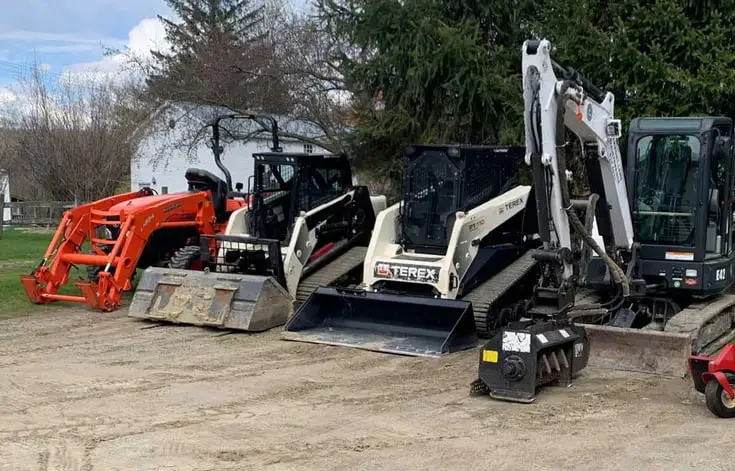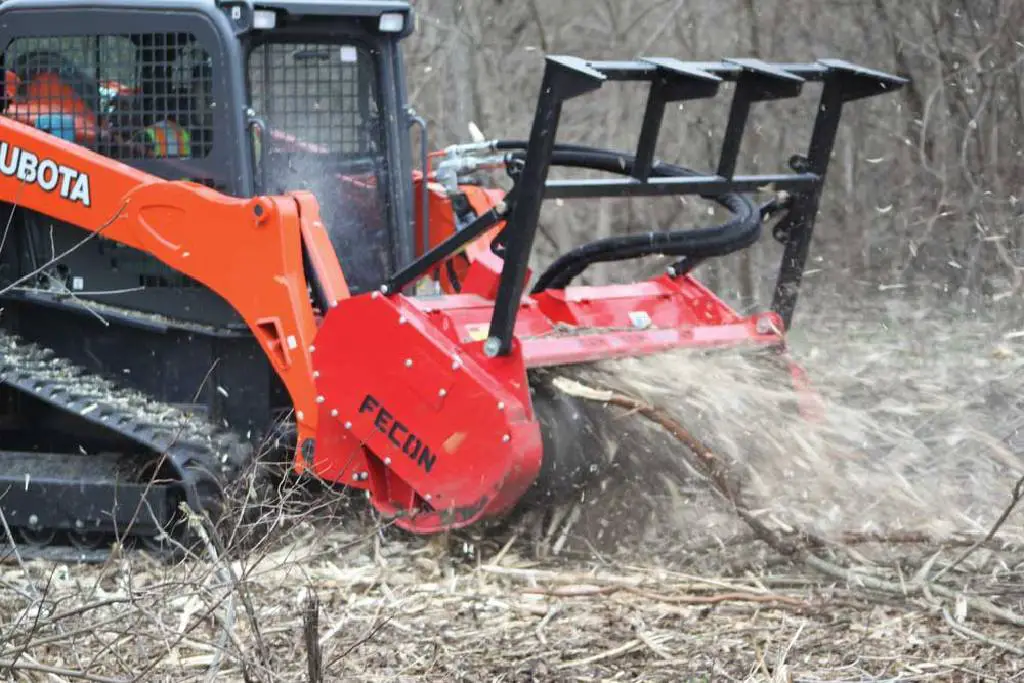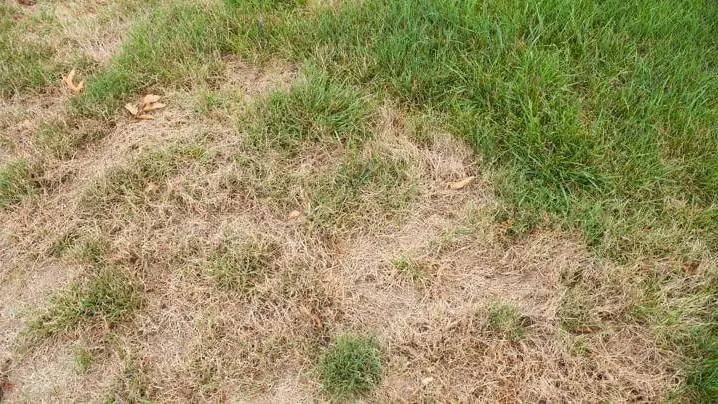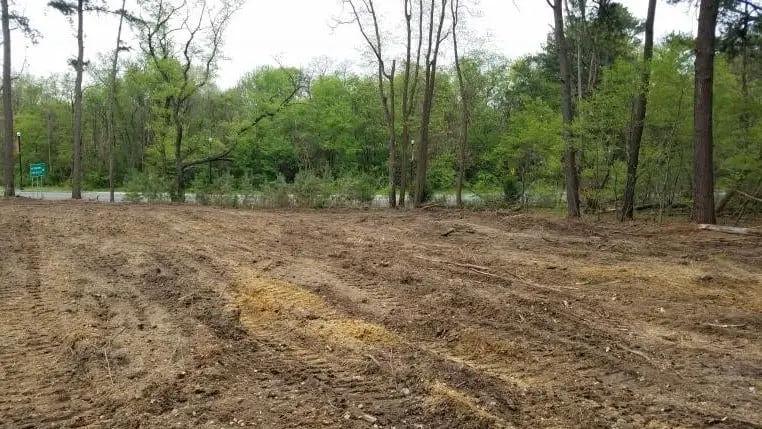How To Maintain Your Forestry Mulcher for Optimal Performance

Forestry mulchers are powerful machines that make clearing overgrown vegetation a breeze. However, like any other equipment, they require regular maintenance to ensure optimal performance.
Proper maintenance not only helps to extend the life of your forestry mulcher but also improves its efficiency, which can save you time and money in the long run.
In this article, we’ll take a closer look at how to maintain your forestry mulcher to ensure it’s running at its best. We’ll cover everything from daily maintenance tasks to more in-depth maintenance procedures. Whether you’re a seasoned operator or just starting with forestry mulchers, these tips will help you keep your machine running smoothly and efficiently.
So if you’re looking to get the most out of your forestry mulcher, keep reading to learn how to maintain it for optimal performance.
The Importance of Maintaining Forestry Mulchers
Forestry mulchers are powerful machines that play a vital role in maintaining healthy forests and reducing the risk of wildfires. But, just like any other machine, they need regular maintenance to work well and at their best.
If you don’t take care of forestry mulchers, they may work less well, use more fuel, and need expensive repairs. So, it’s important to know how important it is to keep forestry mulchers in good shape and to set up a regular maintenance schedule.
One of the most important aspects of maintaining forestry mulchers is keeping them clean. As these machines work in dusty and dirty places, dirt and dust can build up and get into the engine, cooling system, and hydraulic systems, making them less effective.
A clogged engine can cause decreased performance and even engine failure. So, it’s important to clean up forestry mulching machine often, especially the air filters, radiator, and hydraulic oil cooler. Additionally, removing any buildup on the tracks or wheels and greasing the bearings will extend the life of the machine.
Another crucial aspect of maintaining forestry mulchers is getting regular oil changes. Oil is needed for the engine and hydraulic systems to work well and keep things cool. Over time, this oil breaks down and gets dirt and debris in it, which makes it less useful.
Regular oil changes will keep the engine and hydraulic systems running for a long time and keep you from having to pay for expensive repairs. It is recommended to change the oil after every 250 hours of use, or every three months.
Lastly, the machine’s productivity and efficiency depend on how well the cutting teeth on the mulching head are taken care of. These teeth are made to shred wood and plants, and if they are dull or broken, the machine won’t work as well.
Checking and replacing the cutting teeth on a regular basis will keep the machine running at its best and reduce wear on the engine and hydraulics.
Overview of the Maintenance Requirements for Forestry Mulchers
Maintaining forestry mulchers is critical for ensuring their longevity and maximizing their performance. While different models of forestry mulchers may have varying maintenance requirements, there are some general maintenance tasks that are necessary to keep them running smoothly.
One of the most important maintenance tasks for forestry mulchers is to keep the teeth and blades sharp. Dull teeth and blades can reduce the efficiency of the machine and cause excessive wear and tear on the components. Keeping the teeth and blades sharp involves regular inspections, as well as sharpening or replacing them as necessary.
Another important maintenance task for forestry mulchers is to clean and lubricate the machine regularly. Dirt, dust, and other particles can build up in the mulcher’s parts, which can damage the machine or make it work less well. This won’t happen if you clean and lubricate the equipment regularly, which will also help it last longer.
Forestry mulchers may also need to have their hydraulic fluid levels checked, their hoses and fittings checked for damage, and all safety features checked to make sure they are working properly. For each model of forestry mulcher, you need to check the manufacturer’s instructions for specific maintenance needs and schedules.
How To Inspect and Clean the Cutting Teeth of a Forestry Mulcher
The cutting teeth of a forestry mulcher are the most critical component of the machine. They are in charge of shredding trees, bushes, and other plants so that the mulcher can clear a path.
Over time, these teeth can become dull, damaged, or clogged with debris, reducing the machine’s performance. To make sure the machine works well, it is important to check and clean the cutting teeth on a regular basis.
- The first step in inspecting the cutting teeth of a forestry mulcher is to stop the machine and turn off the engine.
- Once the machine is safe to approach, check the cutting teeth for signs of wear or damage.
- Look for any cracks, chips, or missing pieces. If the teeth are significantly worn or damaged, they will need to be replaced.
- Check the bolts and nuts that hold the teeth in place, making sure they are tight and secure.
- After inspecting the cutting teeth, the next step is to clean them. Debris, dirt, and vegetation can accumulate on the teeth and reduce their cutting ability. Use a wire brush or compressed air to remove any buildup on the teeth.
- You need to also inspect the tooth pockets and make sure they are clear of debris. Clean the spaces between the teeth with a toothbrush or a can of compressed air to make sure the teeth fit right and can move freely.
- If the cutting teeth are severely worn or damaged, it is time to replace them. Follow the instructions from the machine’s maker to replace the teeth.
- Make sure the new teeth are the right size and type for the machine. Make sure the bolts and nuts that hold the teeth in place are tightened to the recommended torque specification.
The Importance of Lubricating and Checking Hydraulic Fluids

Lubricating and checking hydraulic fluids are important maintenance tasks that make sure heavy equipment, like forestry mulchers, works well and lasts as long as possible.
Hydraulic fluids are used to move the parts of the machine and control how they move. Without the right amount of lubrication and fluid, the machine might not work as well as it should, which could damage it or make it less effective.
Hydraulic fluids should be checked regularly, typically as part of a routine maintenance schedule. To check fluid levels, open the reservoir and look at the fluid level with your eyes. It should be within the range of the machine. It’s important to use the type of hydraulic fluid that the equipment’s maker recommends to make sure it works well and is compatible.
In addition to making sure there is enough fluid, hydraulic fluids should also be changed every so often, as recommended by the manufacturer. How often you need to change the fluid will depend on things like the type of equipment and how it is being used. To change hydraulic fluids, you have to drain the old fluid and put in new fluid of the right kind.
How To Inspect and Replace Worn-out Parts
Forestry mulchers are powerful machines that work in tough environments, which means that they are subject to wear and tear over time. Wear and tear can lead to reduced performance, downtime, and costly repairs.
So, it is important to check the machine often and replace any worn parts right away. This section will talk about how to check a forestry mulcher for worn parts and replace them.
- The first step in inspecting a forestry mulcher for worn-out parts is to identify the critical components of the machine. These components include the hydraulic systems, the engine, the cutting head, and the tracks or wheels. Once you have identified the critical components, you can start to inspect them for wear or damage. Look for any signs of wear or damage, such as cracks, leaks, or excessive vibration. Additionally, check the hoses and connections for signs of wear or damage.
- After identifying any worn-out parts, the next step is to replace them. When replacing worn-out parts in a forestry mulcher, it is important to use OEM (original equipment manufacturer) parts. OEM parts are specifically designed for the machine and are of the highest quality. Using non-OEM parts can lead to decreased performance, increased downtime, and costly repairs. Follow the instructions from the manufacturer to replace the worn-out parts, making sure to use the right tools and steps.
- Finally, it is crucial to keep records of the machine’s maintenance and repairs. Keeping records will help you track when the machine was last inspected and when parts were last replaced. Additionally, it will help you identify any trends or patterns in the machine’s performance and any recurring issues. This information will be very helpful for keeping the machine in good shape and making decisions about repairs and replacements.
Tips for Storing Forestry Mulchers Properly
Storing forestry mulchers properly is crucial for maintaining their efficiency and longevity. Whether you need to store the machine for an extended period or just overnight, following some simple tips can help prevent damage and ensure that the equipment is ready to use when you need it.
First and foremost, it is important to clean the machine thoroughly before storing it. This means taking off any dirt, branches, or leaves that may have gotten stuck on the equipment while it was being used. Cleaning the machine keeps it from getting rusty and corroded, and it also makes it easier to check for any damage or wear and tear that might need to be fixed before putting it away.
Once the machine is clean, it is essential to store it in a dry, protected area. Moisture can hurt the parts of the equipment and cause them to rust and corrode. If you are storing the machine outside, it is important to cover it with a waterproof tarp or store it in a weatherproof shed or garage.
Finally, it is crucial to follow the manufacturer’s recommendations for storing the machine. This includes properly storing the attachments and accessories that come with the equipment. Also, it’s important to take the battery out and store it somewhere dry and cool.
Conclusion
In conclusion, it is essential to emphasize the importance of maintaining forestry mulchers. These machines are critical in land clearing, site preparation, and vegetation management. With the right care and maintenance, the machine can work at its best, have less downtime, and avoid costly repairs.
For the machine to work well and last as long as possible, it needs to be checked, cleaned, and have worn parts replaced on a regular basis. When the cutting teeth, hydraulic systems, engine, tracks or wheels, and other important parts are checked, wear or damage that needs to be fixed right away can be found. When replacing worn-out parts, using OEM parts makes sure that the machine works with the best parts.
Overall, the key takeaway is that regular maintenance and care of a forestry mulcher is essential for ensuring its optimal performance and longevity. By following the instructions from the manufacturer, keeping track of maintenance and repairs, and taking care of any problems right away, you can make sure your forestry mulcher stays a reliable and useful tool for managing land. With proper maintenance, a forestry mulcher can tackle any land clearing and forestry mulching jobs with confidence and efficiency.







